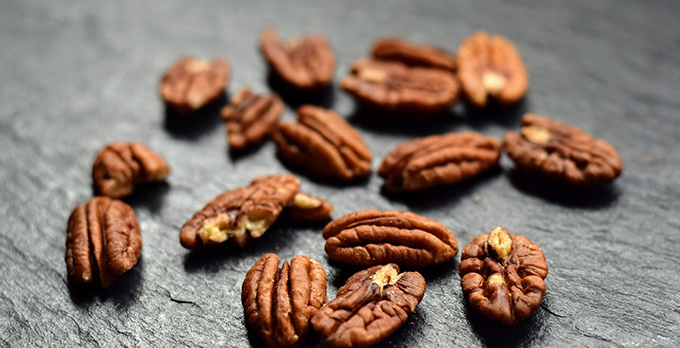The Unique Properties of Functional Sugar for Healthy Living
-

Highly selective propagation of bifidobacteria. Functional sugars can effectively promote the reproduction of bifidobacteria. Not only do bifidobacteria produce no harmful substances, but also organic acids such as acetic acid and lactic acid produced after their metabolism can lower intestinal pH, increase endogenous lysozyme activity and inhibit.
-

Functional sugar is well-known for its good heat and acid stability. It can provide stable performance for the production of various healthy foods and beverages.
-

Functional sugars, such as soluble dietary fiber, are difficult to be broken down by human digestive enzymes. As a result, these artificial sweeteners, with the characteristics of low sweetness and low calories, can be well used to produce food for people with diabetes and those who would love to control their doe.
The Function of Functional Sugar for Healthy Living
Improve the Function of intestinal flora
Functional sugars can effectively promote the reproduction of bifidobacteria. Not only do bifidobacteria produce no harmful substances, but also organic acids such as acetic acid and lactic acid produced after their metabolism can lower intestinal pH, increase endogenous lysozyme activity and inhibit. The role of pathogenic or spoilage bacteria such as Escherichia coli and Clostridium. In addition, Bifidobacterium can also produce vitamin B1, vitamin B2, vitamin B6, folic acid, and other vitamin substances, which play a role in maintaining human health.
Functional sugar for laxative
Commonly used substances with laxative effects are dietary fiber, sugar alcohol, and probiotics. Dietary fiber cannot be absorbed by the human body but can be partially decomposed and fermented by the intestinal flora to produce organic acids, lower the pH of the intestine, and stimulate the peristalsis of the intestinal mucosa. Food residues formed by undigested dietary fiber can change stool properties, stimulate colon movement, and promote defecation. In addition, water-soluble dietary fiber such as soluble fiber for cholesterol can be used by bacteria and can retain moisture in feces. Functional sugar cannot be digested and absorbed in the human body. It is a low molecular weight water-soluble dietary fiber, so it can be used to thin the stool and relieve constipation. Its physiological function is entirely attributed to its unique fermentation characteristics (proliferation characteristics of bifidobacteria). The feature of functional sugar over dietary fiber is that its daily demand is small, and it will not cause diarrhea within the recommended amount. It has a certain degree of sweetness, good sweetness characteristics, is easily soluble in water, does not increase the viscosity of the product, has stable physical properties, and is easy to add to processed foods and beverages.
Functional sugar enhances immunity
The results of a large number of animal experiments show that bifidobacteria multiply in the intestines and can play an anti-cancer effect. This anti-cancer effect is attributed to the cells, cell wall components, and extracellular secretions of bifidobacteria that enhance the body's immunity. For example, sterile mice that are fed with a single factor of colonizing bifidobacteria have a longer life span than untreated sterile mice. Functional sugar has the function of regulating bowel movements. It can inhibit intestinal spoilage bacteria, and the spoilage products are significantly reduced and discharged in time, thus reducing the occurrence of colorectal cancer.
Functional sugar promotes mineral absorption
Studies have shown that functional sugars have the ability to retain mineral elements such as Ca, Mg, Fe, and Zn. Functional sugars cannot be decomposed by digestive enzymes. After reaching the large intestine, the functional sugars are fermented by bifidobacteria to release mineral ions. As we all know, the latter half of the digestive tract, such as the cecum and colon, are important places where mineral elements are absorbed. In addition, the short-chain fatty acids produced by functional sugars fermented by bifidobacteria lower the pH of the intestinal tract. In an acidic environment, the dissolution rate of many minerals increases, which facilitates absorption. Since short-chain fatty acids can stimulate the growth of colonic membrane cells, it improves the absorption capacity of minerals.
Functional sugar bone health
After the functional oligosaccharides and sugar dietary fiber are fermented by beneficial bacteria in the intestine, a large number of organic acids are produced, which improves the solubility of mineral elements in the intestine and makes it easier to be absorbed by the intestine. Feeding mice with 10% oligofructose feed, experiments show that oligofructose can promote the absorption of calcium, iron, magnesium, and zinc, and can prevent bone loss caused by lack of estrogen. Therefore, functional sugar products combined with mineral nutritional supplements will greatly increase the absorption rate of calcium, iron, magnesium, and other minerals.
Functional sugar anti-caries
Functional sugars generally have no adverse effects on teeth. Dental caries is mainly due to the effects of oral microorganisms, especially Streptococcus mutans, using sucrose produced by acid, especially lactic acid, and water-insoluble β-glucan. Functional sugars cannot be the substrates of the aforementioned oral microorganisms, and they have no coagulation effect of bacteria, so they will not cause dental caries.
Functional sugar-lowering blood lipids
A large number of human trials have confirmed that the intake of functional sugars can reduce serum cholesterol levels. In fact, soluble fiber for cholesterol is widely used in the market. The soluble fiber daily intake of a certain amount of functional sugars for 2 weeks to 3 months, total serum cholesterol lowered by 20-50mg/dl. Lactic acid bacteria including bifidobacteria and their fermented dairy product bacteria can reduce total serum cholesterol levels and increase the ratio of high-density lipoprotein cholesterol to total cholesterol in women's serum. The decrease in serum cholesterol levels is thought to be the result of changes in the balance of intestinal microflora. In vitro experiments have also shown that 12 strains of inherent Lactobacillus acidophilus in the human intestine can absorb cholesterol, and Lactobacillus acidophilus can inhibit the absorption of cholesterol in the wall of the small intestine. The ability of bifidobacteria to metabolize to produce niacin is also related to the reduction of serum cholesterol levels. Bifidobacterium controls the newly formed low-density lipoprotein receptors by inhibiting the activated T cells in the human body and plays a role in reducing serum cholesterol levels. Test results on mice show that Bifidobacterium controls the synthesis of cholesterol by affecting the activity of β-hydroxy-β-menthyl glutarate-coenzyme A reductase, thereby reducing serum cholesterol content.
+86-531-69959201
sales@saigaonutri.com
No 12111,Jingshi Road, Lixia District, Jinan City, Shandong Province. P.R. China

